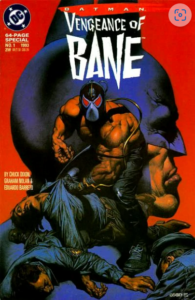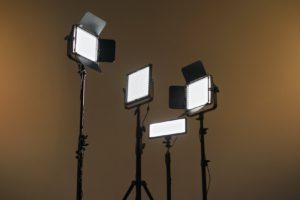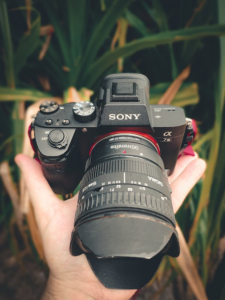The 180-degree rule is a cinematography rule concerning the space between two actors within a frame. Imagine an invisible line, or axis, passes through the two actors. Under the 180-degree rule, the camera can move anywhere on its side, but it should not pass over the axis. Keeping the camera on one side of the 180-degree line makes sure the actors keep the same left/right relationship with one another. Scenes filmed this way look orderly and can be easily followed.
A camera breaks the 180-degree rule if it crosses the imaginary line. By breaking the 180-degree rule, the camera captures a shot called a reverse angle. Reverse angles are disorientating for viewers. While a reverse angle can add dramatic impact in some circumstances, it can often distract viewers and undermine the scene.
How To Follow the 180-Degree Rule
To follow the 180-degree rule, position your actors in the scene and imagine a line drawn between them. Once you know where the 180-degree line is, decide where to set up your camera. Choose carefully, as you won’t be able to cross to the other side of the 180-degree line once you begin filming.
The following strategies can help you follow the 180-degree rule:
- Use the string test . Get actors to hold a length of string, then tie more string from the actors’ string to your camera. Avoid crossing the actors’ string or having your string touch the actors.
- Write gaff tape reminders. Stick gaff tape on your camera showing your characters’ names and arrows noting the directions they should face.
- Diagram your shots. Drawing a storyboard detailing each shot will help you stick to the 180-degree rule.
Manage Scenes with Multiple Eyelines
The 180-degree line also applies to scenes with larger groups. Filming scenes with a larger group is much more challenging. We can draw many different axes between all these characters. However, keeping track of them all, and trying not to cross them, is difficult.
Instead, many directors imagine their group of actors on a theater stage. In their mind’s eye, they see just one line, corresponding with the front of the stage. They keep their camera at the front of this line to make their scene look orderly.
Film blocking helps directors make scenes, including those with multiple eyelines, look their best. This video offers film blocking tips to improve your technique.
Manage Vehicles and Moving Objects
Scenes with vehicles and other moving objects should follow the 180-degree rule This film rule makes sure the moving elements travel in a consistent direction. Breaking the 180-degree rule will make the moving item seem like it’s returning to its original destination.
Managing Conversations
Scenes where characters talk with one another, during dates or job interviews, for example, should also follow the 180-degree rule. That’s because the 180-degree rule connects the eyeline of the two characters. However, the eyeline might not match up if you’re filming close-ups with a wide-angled lens. Instead, you might find one character seems to look off to the side, which can make them seem evasive.

Scene from “The Shining”
You can correct this common problem by filming close to the 180-degree line. Using a standard or medium telephoto lens setting, rather than a wide lens, can also connect the eyeline.

Scene from “The Shining”
Examples of Following the 180-Degree Rule
Watching scenes following the 180-degree rule can help you understand the impact of this filming choice more. The following scenes adhere to the 180-degree rule:
“Heat” (1995)
The 180-degree line in this scene from the ‘90s thriller “Heat” runs between Robert De Niro and Al Pacino. Pay attention to their eyeline as this scene unfolds. De Niro always looks camera left, while Pacino always looks camera right. Keeping their left/right relationship consistent helps viewers feel oriented through the scene.
This clip from “Heat” also follows the 180-degree rule, even though it shows a much larger group of actors. There are multiple eyelines, but they are shown consistently through the scene.
How To Cross the Line in Film
Many filmmakers purposely break the 180-degree rule as a way to signal that something is wrong.
While breaking the 180-degree rule is acceptable, you should consider this decision carefully. It’s important that you’re always aware of the 180-degree line and which side of your camera it’s on. Only break the 180-degree rule if you have a good reason to.

Scene from “Requiem for a Dream”
Examples of Breaking the 180-Degree Rule
Examining films breaking the 180-degree rule can help you better understand its effect. Here are some scenes demonstrating how breaking the 180-degree rule evokes feelings in the audience.
“25th Hour” (2002)
The axis in this scene from Spike Lee’s “25th Hour” runs between Edward Norton and Isiah Whitlock Jr. Both actors look camera left, telling us the 180-degree rule was broken. It disorients the viewers, just as Edward Norton’s character Monty Brogan is disorientated. He isn’t sure why the detective is in his house making a drug bust, and he tries to make sense of the situation. Those pervasive feelings of chaos and confusion make it the ideal scene for breaking the 180-degree rule.
“Hulk” (2003)
This scene from “Hulk” sees an axis running between Jennifer Connelly and Sam Elliott. As in the scene in “25th Hour,” both actors look camera left. Breaking the 180-degree rule adds further unease to the tense discussion between their characters: Betty Ross and General Thaddeus Ross. As father and daughter, they should get along, but this scene reveals the strain as they disagree on how to handle Bruce Banner.
How To Bend the 180-Degree Rule
There is another alternative that is less traditional than following the 180-degree rule and less disorientating than breaking it: bending the 180-degree rule. This less extreme alternative to rule-breaking can be done in several ways:
- Neutral shot: Filmed with a camera on the 180-degree line
- Camera movement: Filmed with a camera moving over the axis, so viewers stay oriented
- Long shot: Filmed by moving the camera out for a long shot of the whole scene to reset the 180-degree line
- Close-up shot: Filmed by moving the camera in for a close-up to reset the 180-degree line
- Cutaways: Filmed by moving the camera away from the actors to another shot, without an established orientation, to reset the 180-degree line
Examples of Bending the 180-Degree Rule
Seeing films bending the 180-degree rule can help you learn the potential of this technique. View these scenes, which all bend the 180-degree rule.
“Ocean’s Eleven” (2001)
This scene from “Ocean’s Eleven” bends the 180-degree rule with a neutral shot. The axis in this scene runs down the middle of the table, from Elliott Gould to the spot between Brad Pitt and George Clooney. The camera sits at this line, between Pitt and Clooney, ensuring the viewers look Elliott Gould’s character Reuben Tishkoff right in the eye. This alternative to a point-of-view shot, capturing either Pitt or Clooney’s perspective, works well because it puts the Hollywood heartthrobs on equal footing in this scene.
“Heat” (1995)
While “Heat” has many scenes following the 180-degree rule, director Michael Mann wasn’t afraid to bend the rules. This scene sees the camera cross the line as it unfolds. As viewers, we’re aware of the change, so we stay orientated. The change in perspective mirrors the change in Neil, from feeling reserved to more accepting of Eady’s company.
Knowing how to apply the 180-degree and the times to break it can take your filmmaking to the next level. Becoming a well-rounded filmmaker starts with knowing the best techniques used in the industry today. Apply for the Cinema Production Diploma at Nashville Film Institute to begin your career.











